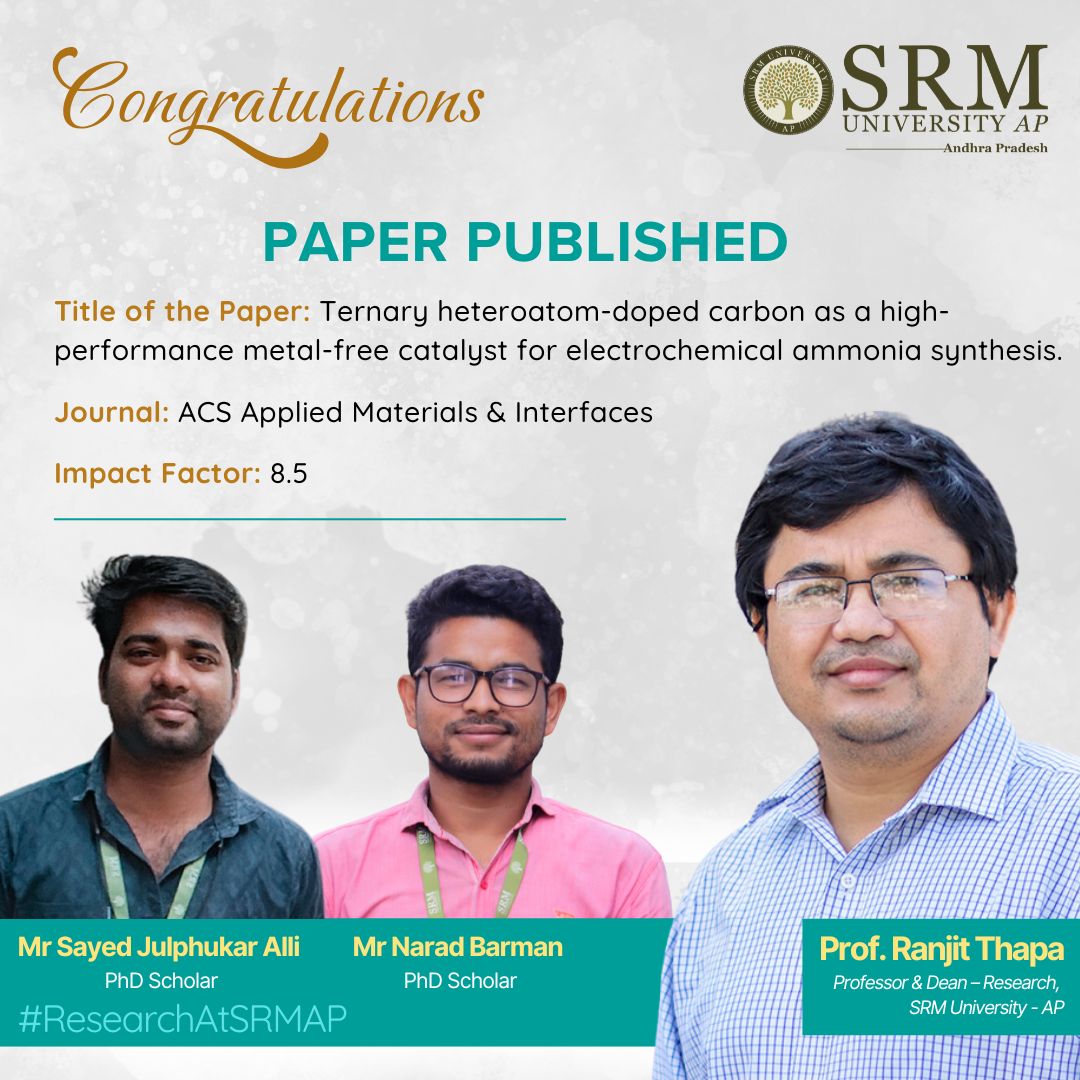 In the paper titled “Ternary Heteroatom-doped Carbon as a High-performance Metal-free Catalyst for Electrochemical Ammonia Synthesis.” by Prof. Ranjit Thapa and his research Scholars, a novel approach to enhance nitrogen reduction reactions (NRR) is explored. This research, published in ACS Applied Materials & Interfaces, investigates the potential of nitrogen-doped carbon materials further enhanced by the incorporation of boron and fluorine heteroatoms. The study reveals significant advancements in electrocatalytic performance, emphasising the importance of efficient and sustainable ammonia production.
In the paper titled “Ternary Heteroatom-doped Carbon as a High-performance Metal-free Catalyst for Electrochemical Ammonia Synthesis.” by Prof. Ranjit Thapa and his research Scholars, a novel approach to enhance nitrogen reduction reactions (NRR) is explored. This research, published in ACS Applied Materials & Interfaces, investigates the potential of nitrogen-doped carbon materials further enhanced by the incorporation of boron and fluorine heteroatoms. The study reveals significant advancements in electrocatalytic performance, emphasising the importance of efficient and sustainable ammonia production.
Abstract :
Electrochemical nitrogen reduction reaction (NRR) has garnered much attention, but the major challenge remains with efficient electrocatalysts. Metal-free carbonaceous materials, doped with heteroatoms and structural defects, present a promising alternative to metal-based catalysts. This study introduces a novel strategic stepwise synthesis strategy of defective nitrogen-doped carbon material, further doped with secondary heteroatoms boron and fluorine (FBDG). These secondary atoms in combination create additional active sites for nitrogen adsorption, activation and suppress the hydrogen evolution reaction (HER). The synergistic effect of three heteroatoms and induced defects in the catalyst enhances electron-donor behaviour, improving π bonding within the carbon framework and facilitating the electron transfer processes during NRR, resulting in a significantly high Faradaic efficiency of 38.1 % in the case of metal-free electrocatalysts. The theoretical calculation reveals that FBDG possesses sufficient charge density to reduce nitrogen at a low overpotential following an alternating free energy pathway. The reaction intermediates are thereby identified by in situ ATR-FTIR studies. For rapid screening of ammonia, we used a rotating ring disk system (RRDE) and did a kinetic study. The high efficiency, stability, and cost-effectiveness of FBDG position it as a strong contender for sustainable ammonia production and open up the way for future advancements in NRR.
Practical implementation:
The practical implementation of your research or the social implications associated with it.The FBDG catalyst achieved a remarkable Faradaic efficiency of 38.1 %. Theoretical studies confirmed that FBDG has a low overpotential, thereby increasing its appropriateness for NRR. The incorporation of fluorine and boron through co-doping in N-doped defective material enhances the N2 absorption energy, and from the charge density difference, we showed improved electron delivery from the host surface to the intermediate, which is essential for breaking the strong triple bond in N2 molecules, enhancing NRR. This work not only introduces a novel catalyst design strategy but also provides deep insights into the synergistic effects of heteroatom doping and defect engineering, paving the way for more efficient and sustainable ammonia production.
Collaborations
Dr Ramendra Sunder Dey, Assistant Professor (Scientist-D), INSA Associates, Institute of Nano Science and Technology, Mohali

